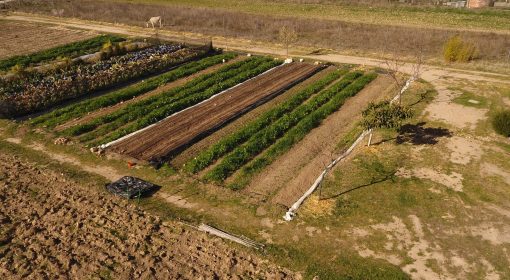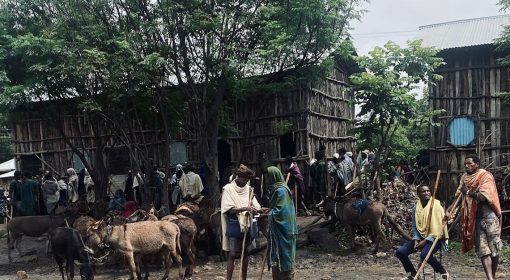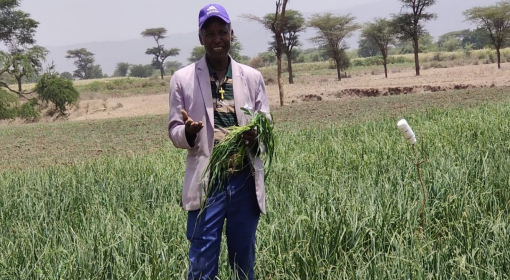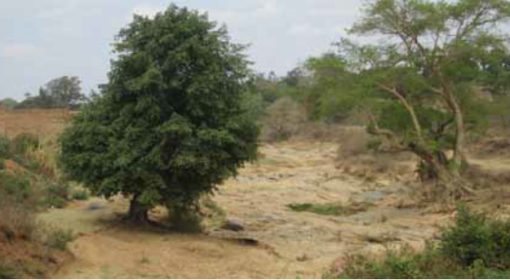Posted by Marta Agujetas
May 13, 2014
Almería is located in the region of Andalucia in south-eastern Spain. It has an average annual precipitation of 220mm. Until the mid-1960’s, socio-economic indicators suggested Almería was an underdeveloped province in a state of decline. However, over the last decades this province has witnessed a period of growth greater than that experienced by the rest of the region due to the development of greenhouse horticulture.
The estimated area under greenhouses in the province is currently 26,750 ha. This achievement was made possible despite the poor soil quality and high salinity that characterizes the area. Much of this success is thanks to the introduction of the enarenado (sand-plot)technique. This technique consists of an 8–12 cm layer of coarse sand mulch on the soil surface. The sand mulch reduces direct evaporation from the soil surface, reducing crop water use and allowing vegetables to grow with saline water. The technique was developed as an effort to overcome the extremely poor quality of indigenous soils in the region. The case of Almería provides a clear example of the potential that greenhouse horticulture offers to solve some of the future challenges to feeding a growing population, even in water-scarce conditions and where the soil is of poor quality.
Despite the outstanding positive impact in the local economy, this “success story” has had an undesirable effect on the local environment. Local water resources have been adversely affected by irrigated greenhouse horticulture—there has been overexploitation, nitrate contamination and salinization of aquifers. To reverse this trend, various technologies and management practices have been implemented and much research is being done to find sustainable solutions.
One example in particular highlights the efforts to adopt environment-friendly production techniques. Between 2006-2009, integrated pest management (IPM) was widely implemented in cultivating the main crops. IPM minimizes the use of chemicals and relies on natural enemies and beneficial organisms for crops. Almería has become the world’s leading area in using this system, ahead of countries such as The Netherlands and Israel. The implementation of IPM has led to a strong decline in the use of phytosanitary products and a partial removal of chemical residues.
Another sustainable solution is the use of fertigation systems. Fertigation refers to the application of fertilizers through the irrigation water by connecting a fertilizer injector directly to the irrigation system. This allows the supply of correct levels of nutrients exactly and uniformly, and only to the wetted root volume where the active roots are concentrated. This significantly increases fertilizer-use efficiency, which means that the applied fertilizer rate can be reduced. This reduces production costs, and groundwater pollution caused by the leaching of fertilizer/ accumulation of nutrients and salts in the topsoil.
Much research has been (and is still being) done to optimize resource use and decrease the impact on the environment. For instance, the WATERGY project – funded within the European Union’s 5thFramework Programme – developed the ‘closed greenhouse’ concept that involves implementing a new method of passive climate control and water treatment (desalinization and irrigation water recycling) by only using solar energy. Air in a closed greenhouse is humidified by plants. It rises up into the roof area, where it is further humidified by evaporation devices. The air rises up by buoyancy, reaching the upper end of a cooling duct, where it cools down and the water vapour condenses as it reaches dew point. The cooled air becomes heavier and falls back through the duct into the vegetation area at the ground level.
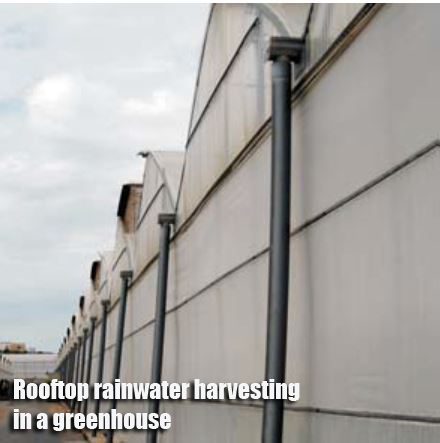
In the neighboring region of Murcia a system to harvest dew and rainwater from greenhouse rooftops has been introduced – although it has not been adopted widely yet. In this system rainwater, dew and condensation water are captured, collected and stored for later use. The catchment surface is the roof of the greenhouse, which needs to have the appropriate surface and slope so that water runs off easily from the roof to the collection system. The collection and transportation elements are made of a series of gutters and downspouts made with light, waterproof materials that can be joined together easily to reduce leakage. The materials used are mostly metal or PVC. Metal gutters last longer and require less maintenance, but they are more costly. PVC gutters are easier to obtain, durable and more affordable.
Annually, this system helps collect around 75-100 m3 water per year over a surface of 400 m2. In addition, this system minimizes water pollution and it doesn’t require any energy input to work.
Do you know of similar examples? Please share them in the comments section below.
{jcomments on}


